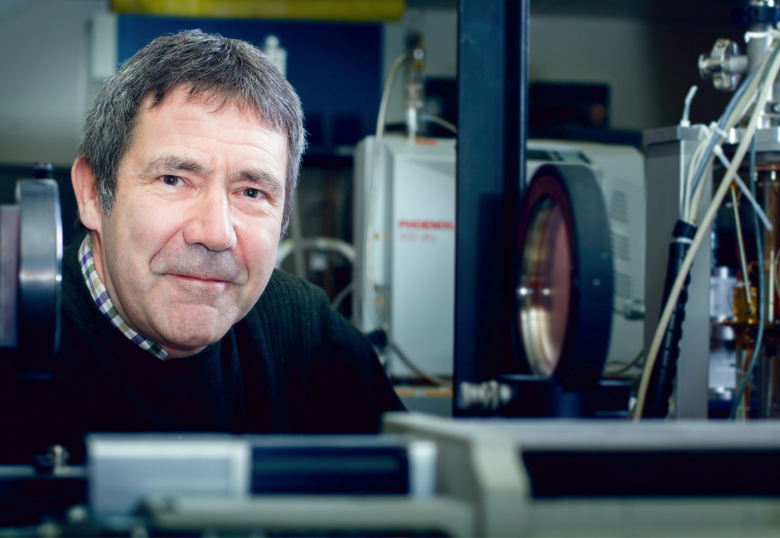SPICA, the joint mission between the Japanese Space Agency (JAXA) and the European Space Agency (ESA) to observe the infrared with super sensitive instruments, was named one of three finalists in ESA’s M5 call for mission proposals on Monday, May 7.
“I am impressed about the quality and breadth of the missions proposed for M5. Each of the selected proposals has high scientific value and would ensure a continuation of Europe’s expertise in the fields of planetary science, astrophysics and cosmology,” says Günther Hasinger, ESA Director of Science.
That’s good news for the University of Lethbridge, which is the lead Canadian institution in the mission, and astrophysicist Dr. David Naylor, who has been involved in the project from its beginning nine years ago.

“We are extremely pleased that SPICA has been named one of the three finalists,” says Naylor. “We felt we had a very strong proposal with a team composed of scientists from all of the three instruments that flew on Herschel. While this decision is not the final goal, it’s a monumental milestone.”
“This is fantastic news for David and his team at the Institute for Space Imaging Science (ISIS),” says Dr. Erasmus Okine, vice-president (research). “The U of L’s involvement in this project demonstrates the strength of our research programs and will provide tremendous opportunities for our students.”
Building on the success of Herschel, the Space Infrared Telescope for Cosmology and Astrophysics (SPICA) will feature a 3-metre class telescope cooled to less than 8 Kelvin (–265 Celsius) by the use of mechanical coolers. SPICA’s large, cold aperture will provide increased sensitivity in observations at mid- and far-Infrared wavelengths.
While advancements have been made in understanding how the first galaxies and stars formed, the picture is incomplete because the birth of stars, galaxies and planets occurs in areas hidden behind a thick blanket of dust. This dust can be penetrated by infrared spectrometers like SAFARI, which, given the support of the Canadian Space Agency, is the instrument Naylor and his team at ISIS will help to build.
“Most people do not appreciate the time scale of space projects,” says Naylor. “Typically, a space exploration mission will last two decades from cradle to grave and involve hundreds of talented scientists and engineers from many countries and institutions. To be invited to join such exploration missions, one has to bring something unique to the table. In the case of SAFARI, it is Canada’s renowned expertise in Fourier transform spectroscopy that exists both in academia and industry. My group has been continually funded by the Natural Sciences and Engineering Research Council of Canada (NSERC) for more than 36 years and this allowed us to do the basic research to address the challenges of launching and operating a spectrometer in space. We are proud to lead Canada into this exciting mission.”
SPICA, led by Dr. Peter Roelfsema of SRON, the Netherlands Institute for Space Research, is expected to launch toward the end of the next decade, around 2028. Almost 20 institutes from 15 countries are participating, each bringing its own expertise and experience. The United States, United Kingdom, Spain and Canada are major contributors. After launching, SPICA will make its way to the L2 Lagrange point, a parking spot in space a million miles away from Earth in the opposite direction of the sun, where it will slip into orbit and get a clear view of deep space. The SPICA mission will have a five-year lifespan.
“Our understanding of the universe is fundamentally going to change,” says Naylor. “Herschel provided our first large scale view of the processes at play in star formation, but these were restricted to our own galaxy, the Milky Way. Since Herschel was launched, advances in detector sensitivity have continued unabated and we now have detectors that are 100 times more sensitive. This sensitivity will allow us to explore a volume of the universe 1,000 times larger. This is a disruptive advance and is the primary reason ESA selected the SPICA mission.”
Because it takes time for light to travel to Earth, astrophysicists want to look as far as possible into space to see the universe as it was in its youth. Since the majority of the light emitted in the universe is detected in the infrared range, a high-resolution spectrometer is required.
“SPICA will provide astronomers access with unfettered access to the mid- and far-infrared spectrum and help answer fundamental questions about the origins of planets, stars and galaxies throughout cosmic time. This is a uniquely human endeavour — to understand the universe and our place in it,” says Naylor.
More information on the SPICA mission is available on the ISIS website.
